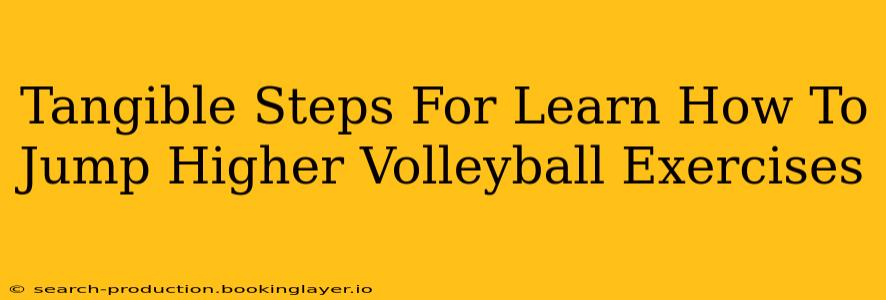Want to dominate the volleyball court? Leaping high for powerful spikes and incredible blocks is crucial. This guide provides tangible, effective volleyball exercises to help you dramatically improve your vertical jump. We'll break down the process into manageable steps, focusing on building the strength, power, and technique you need to elevate your game.
Understanding the Physics of a Higher Jump
Before diving into exercises, let's understand what contributes to a higher jump. It's not just about leg strength; it's a combination of:
- Explosive Power: The ability to generate force quickly. This is key for maximizing your jump height.
- Leg Strength: Strong quads, hamstrings, glutes, and calves are fundamental for generating the force needed for a powerful jump.
- Plyometrics: Exercises that use explosive movements to improve power and agility.
- Flexibility and Mobility: Proper flexibility enhances range of motion, contributing to a higher jump.
- Technique: The way you approach and execute your jump significantly impacts its height.
Phase 1: Building a Strong Foundation – Strength Training
This phase focuses on building the foundational strength necessary for explosive movements. Aim for 2-3 strength training sessions per week, allowing for rest days between workouts.
Essential Exercises:
- Squats: Develops powerful quads and glutes. Variations include barbell squats, goblet squats, and jump squats.
- Deadlifts: Works the entire posterior chain (hamstrings, glutes, lower back), crucial for powerful jumps. Focus on proper form to avoid injury.
- Lunges: Improves leg strength and balance, important for stability during a jump. Try forward, reverse, and lateral lunges.
- Calf Raises: Strengthens calf muscles, contributing significantly to jump height. Include variations like single-leg calf raises for added challenge.
Phase 2: Explosive Power – Plyometric Training
Plyometrics are key to developing explosive power. Start slowly and gradually increase intensity as your strength improves. Perform plyometric exercises 1-2 times per week, allowing ample rest.
Effective Plyometric Exercises:
- Box Jumps: Excellent for developing explosive power. Start with a lower box and gradually increase the height as you improve.
- Jump Squats: Combine the strength of squats with explosive power. Focus on a powerful upward drive.
- Depth Jumps: Step off a box and immediately jump as high as possible. This exercise develops reactive strength. (Caution: Start with a low box and progress gradually to avoid injuries).
- Lateral Bounds: Improve lateral agility and explosiveness, crucial for volleyball movements.
Phase 3: Honing Your Volleyball-Specific Skills
Now it's time to integrate your newfound strength and power into volleyball-specific drills.
Volleyball Drills:
- Approach Jumps: Practice your approach, focusing on powerful leg drive and arm swing coordination.
- Blocking Jumps: Practice blocking drills, emphasizing explosive vertical jumps and proper hand placement.
- Spiking Jumps: Work on your spiking technique, integrating the power generated from your legs into the arm swing.
Phase 4: Flexibility and Mobility
Flexibility and mobility are often overlooked but play a significant role in achieving maximum jump height.
Essential Stretches:
- Hamstring stretches: Crucial for improving leg extension and jump height.
- Quadriceps stretches: Enhance knee extension and overall leg power.
- Calf stretches: Improves ankle flexibility, crucial for powerful calf muscle engagement.
- Hip flexor stretches: Improves hip mobility, increasing your range of motion.
Consistency is Key
Remember, improving your vertical jump takes time and dedication. Consistency is crucial. Stick to your training program, gradually increasing the intensity and difficulty of exercises as you get stronger. Proper nutrition and rest are also essential for muscle recovery and growth. Listen to your body and don't hesitate to consult a physical therapist or coach if you experience any pain or discomfort. With dedicated effort and the right training, you'll soon be soaring above the net!

